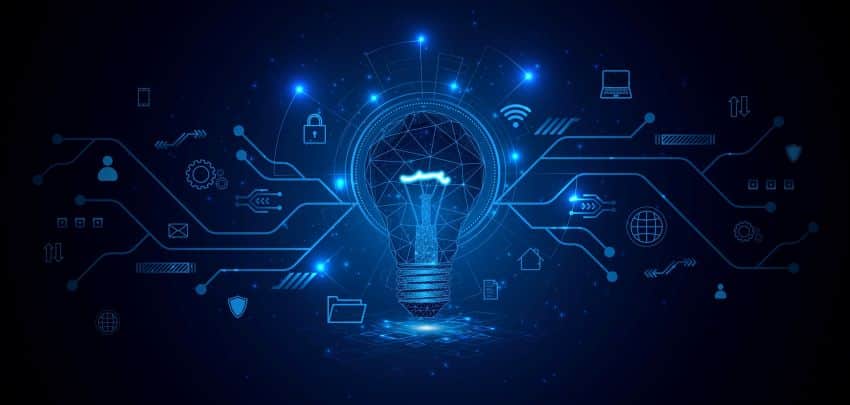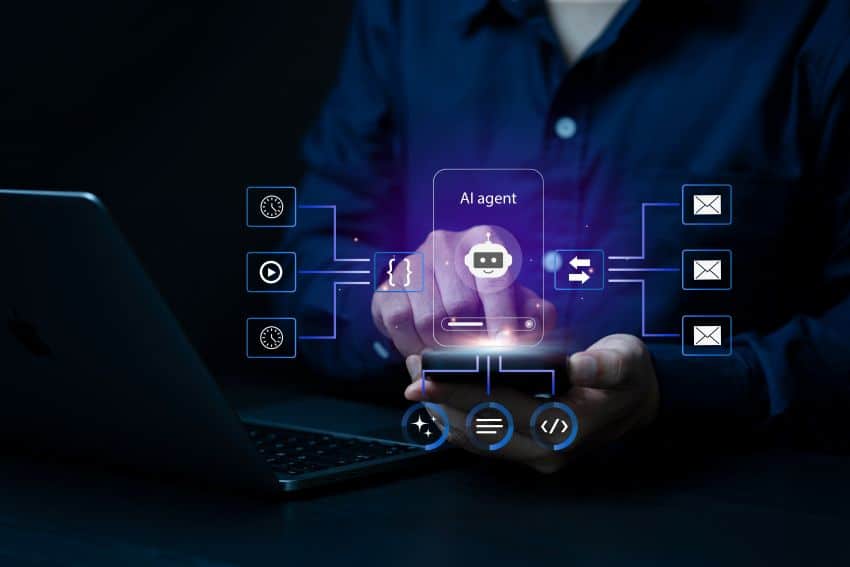Higher education IT departments face a perfect storm of challenges. Budgets shrink while digital service expectations soar. Students, faculty, and staff demand the same seamless experiences they get from Amazon – instant responses, self-service options, and 24/7 availability. Meanwhile, IT teams struggle with talent shortages, legacy systems, and mounting pressure to prove their value.
The solution isn’t hiring more staff or throwing money at the problem. Forward-thinking institutions are revolutionizing their approach through modernized IT Service Management (ITSM). By embracing codeless configuration, intelligent automation, and AI-driven virtual agents, these schools deliver faster, more consistent service while reducing costs and operational strain.
This transformation represents more than a technology upgrade; it’s a fundamental shift in how campus IT operates. The institutions leading this revolution are proving that strategic ITSM modernization can turn resource constraints into competitive advantages.
The Six Forces Driving Higher Ed ITSM Transformation
Campus IT leaders face interconnected challenges that demand a coordinated response. These six drivers are reshaping how institutions approach service management:
1. Shrinking Budgets Meet Rising Expectations
Funding continues to decline while tuition revenues face pressure from enrollment challenges and affordability concerns. Yet digital service demands expand each semester. Students arriving on campus expect enterprise-grade technology experiences, having grown up with smartphones and cloud services.
This creates an impossible equation: deliver more sophisticated services with fewer resources. Traditional approaches, like hiring more staff or buying additional tools, simply aren’t viable in this current environment.
2. Talent Shortages Create Critical Bottlenecks
The competition for skilled IT professionals has never been fiercer. Universities often face months-long hiring processes while competing against private sector salaries. Many institutions rely heavily on specialized developers, creating dangerous knowledge silos and bottlenecks.
When key personnel leave, critical processes can grind to a halt. This dependency on scarce technical expertise limits agility and increases operational risk.
3. Fragmented Systems Undermine User Experience
Students juggle multiple logins across disconnected systems – one portal for grades, another for housing, yet another for IT support. Faculty struggle with inconsistent processes that vary by department. IT staff waste time manually transferring data between systems.
These fragmented experiences erode satisfaction and trust. Users expect unified, seamless interactions, not digital obstacle courses.
4. Data Silos Blind Decision Makers
When ticketing systems, asset management platforms, and academic applications operate in isolation, IT leaders lose visibility into the full operational picture. Critical metrics remain scattered across disconnected dashboards.
This fragmentation makes it nearly impossible to measure true impact, identify trends, or make data-driven decisions about resource allocation and strategic priorities.
5. Security and Compliance Pressures Intensify
Cybersecurity threats targeting educational institutions continue to escalate. Ransomware attacks, data breaches, and social engineering campaigns specifically target universities’ vast digital assets and relatively open networks.
Simultaneously, regulatory requirements around FERPA, HIPAA, and accessibility standards place additional compliance burdens on already stretched teams.
6. Accountability Demands Measurable Results
University administrators increasingly demand concrete ROI demonstrations from IT investments. Vague promises about “improved efficiency” no longer suffice, IT leaders must prove how their services directly contribute to student success, retention, and institutional goals.
This accountability extends beyond cost savings to encompass strategic value creation and competitive differentiation.
The New Service Management Playbook
Modern ITSM transformation addresses these challenges through five interconnected pillars that work together to create operational excellence:
Codeless Technology: Breaking the Developer Bottleneck
Traditional ITSM implementations require extensive custom coding, creating dependency on specialized developers and long deployment cycles. Codeless platforms empower non-technical staff to configure workflows, adapt processes, and respond to user feedback without programming expertise.
This democratization of technology configuration dramatically reduces time-to-value. IT teams can implement changes in days rather than months, responding quickly to evolving campus needs.
Enterprise Automation: Eliminating Manual Inefficiencies
Automation can handle routine tasks that currently consume significant staff time, things like password resets, software provisioning, equipment requests, and basic troubleshooting. This frees skilled professionals to focus on strategic initiatives that drive institutional value.
Automated workflows also ensure consistency across departments. Standard processes reduce errors, improve compliance, and create predictable user experiences regardless of which team member handles a request.
Campus-Wide Integration: Connecting the Digital Ecosystem
Modern ITSM platforms integrate seamlessly with existing enterprise systems like student information systems, learning management platforms, HR databases, and financial applications. This connectivity eliminates data silos and reduces system-switching inefficiencies.
Unified integration creates a single service experience where users can access multiple services through one interface, while staff gain comprehensive visibility across all systems.
AI-Driven Virtual Agents: Scaling Support Without Headcount
Intelligent virtual agents handle Tier 0 and Tier 1 support requests without human intervention. These AI systems don’t just answer questions, they take action, provisioning software, resetting passwords, and resolving common issues instantly.
Available 24/7, virtual agents provide immediate assistance during peak demand periods, holidays, and after-hours emergencies when human staff isn’t available.
IT Asset Management: Optimizing Resource Utilization
Integrated asset management provides real-time visibility into hardware and software inventory, utilization patterns, and lifecycle status. This intelligence prevents duplicate purchases, identifies underutilized resources, and supports strategic planning.
Automated asset tracking reduces manual inventory processes while ensuring compliance with software licensing and hardware refresh cycles.
Proven Results: Real-World Success Stories
Western University of Health Sciences: 20% Ticket Deflection Through Dual-Layer Automation
WesternU faced typical higher education challenges – repetitive manual tasks, data inconsistencies, and an overwhelmed help desk serving 4,000+ students across 20+ academic programs.
Their solution combined backend process automation with frontend AI intelligence. Backend automation connected Ellucian Banner, JAMF, Microsoft Intune, and Active Directory, enabling automated data synchronization and compliance tracking. The frontend deployed an AI virtual agent that doesn’t just answer questions but takes immediate action through integrated workflows.
Results speak for themselves: a 20% deflection in staff-handled tickets, significant time savings on repetitive tasks, and improved data integrity across enterprise systems. Most importantly, technicians gained time to focus on strategic projects rather than routine maintenance.
Bowdoin College: 60% Projected Ticket Reduction with Intelligent Automation
Bowdoin College maintained its commitment to exceptional service while addressing universal resource constraints. They strategically combined ITSM with conversational AI and enterprise integration to automate communication-centric processes.
Their virtual agent integrates with backend systems to provide action-oriented experiences. Students can check software licenses, reset passwords, and access troubleshooting guidance through natural language interactions with a virtual support agent. The system handles routine transactions while preserving human staff for complex, relationship-building interactions.
The projected 60% reduction in help desk ticket volume demonstrates how automation elevates rather than replaces human service. By handling routine requests automatically, staff can focus on meaningful engagement and complex problem-solving.
Building Tomorrow’s Service Foundation Today
ITSM modernization isn’t about purchasing more tools; it’s about creating smarter, more agile service environments that meet today’s expectations while preparing for future demands.
The institutions leading this transformation understand that competitive advantage comes from operational excellence, not just technology acquisition. They’re building foundations that scale with growth, adapt to changing needs, and deliver measurable value across their entire digital ecosystem.
These early adopters are proving that resource constraints don’t limit innovation – they inspire it. By eliminating silos, reducing manual effort, and improving agility, they deliver superior service experiences while controlling costs and empowering their teams to focus on strategic initiatives that drive institutional success.
The question isn’t whether to modernize, it’s whether your institution will lead the transformation or struggle to catch up.
Want to learn more about how colleges across the country are modernizing their service management? Download the latest eBook: Blowing Up the Status Quo

